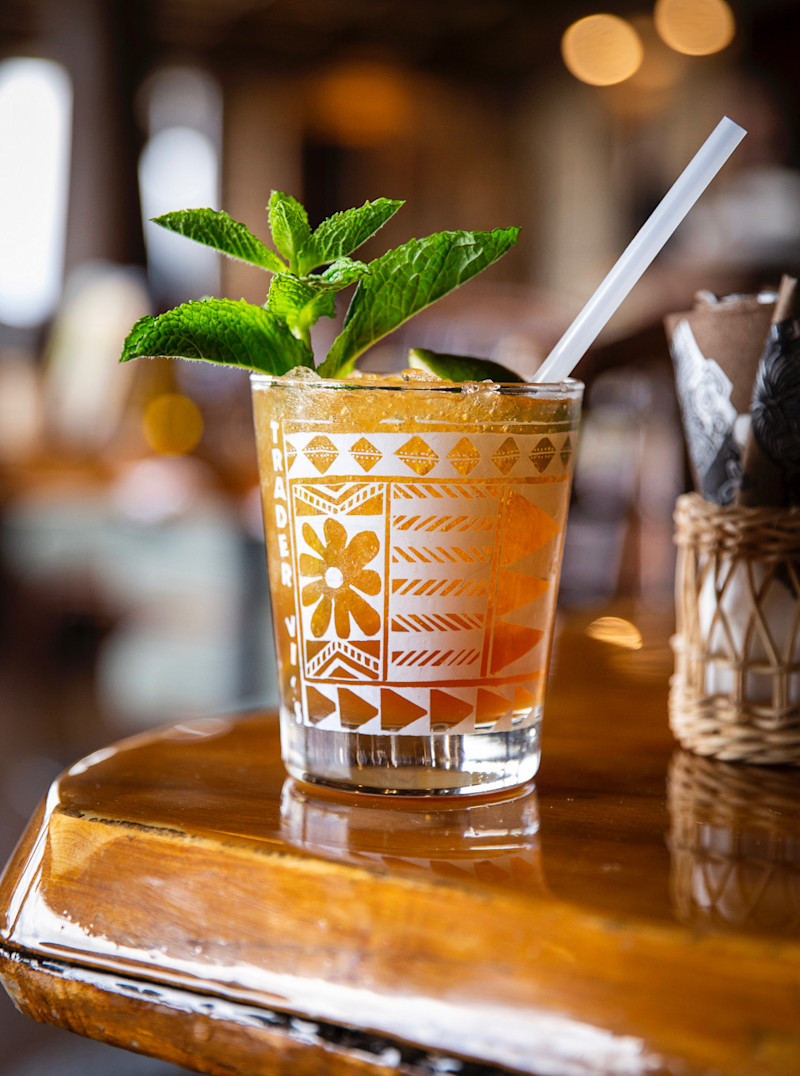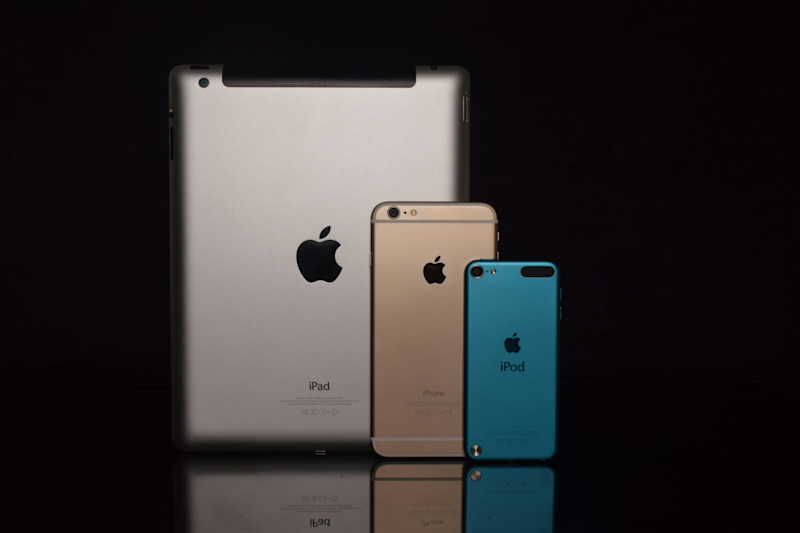
If you mention the likes of Nike, Apple, or Mcdonald's nowadays you instantly evoke thoughts of the globally renowned brands that earn multiple millions of dollars every year, but discovering the origins of these brands is almost as impressive as the fame they today hold
Some of the world’s most recognisable brands, celebrated for their innovation, quality, and global influence, have remarkably modest origins. From the quaint corners of small towns to the bustling streets of urban centres, these brands emerged from humble beginnings, driven by visionary founders and a dedication to achieve the unthinkable.
Behind the glitz and glamour of their current stature lies a journey that transcends the ordinary, filled with determination, creativity, and a deep understanding of consumer needs. At Katch International, we love a good underdog story, so join us as we embark on a captivating journey through the history of iconic brands, tracing their evolution from humble beginnings to global phenomena.
Trader Vic's: Crafting the Tropical Escape
Victor J. Bergeron, known to the world as “Trader Vic,” was a pioneer of Polynesian pop culture and a master of mid-century hospitality who lived a life brimming with excitement, enjoyment, and exoticism. His journey into the restaurant business began modestly in 1934 when, armed with little more than a potbelly stove and $500, he opened a small bar called Hinky Dinks, located across from his family’s grocery store in Oakland. In 1944, this cosy little saloon was transformed into the tropical-themed Trader Vic’s that we know today.
What started as a neighbourhood bar soon evolved into an exotic getaway, complete with bamboo décor, hand-carved tikis, and rattan furniture, capturing the imagination of its patrons. 1944 was not only the year Trader Vic’s was born, but also the year that Bergeron invented the Mai Tai, a cocktail that epitomised tiki culture and remains a staple in bars worldwide. The drink’s success showcased Bergeron’s knack for innovation and marketing—a combination that propelled the expansion of Trader Vic’s into an international restaurant chain.

The brand’s growth accelerated in the late 1940s and 1950s when Bergeron partnered with major hotel chains like Western Hotels and later Hilton Hotels. These partnerships allowed Trader Vic’s to open locations in prime hotels across the United States and internationally, bringing its distinctive blend of dining and imaginative décor to a global audience. At its zenith during the tiki culture craze of the 1950s and 1960s, Trader Vic’s boasted over two dozen locations worldwide. Today, the brand continues to operate across multiple continents, retaining its iconic status as a purveyor of the tiki lifestyle and exotic cuisine.
McDonald’s: Revolutionising Fast Food
McDonald’s genesis traces back to 1940 when brothers Maurice (“Mac”) and Richard McDonald opened their first drive-in restaurant in San Bernardino, California. However, it wasn’t until 1948 that they revolutionised their business model, envisioning a new type of restaurant aimed at delivering large quantities of food at affordable prices. This visionary shift led to the development of the Speedee Service System, a pioneering approach that introduced self-service counters, eliminating the need for traditional waitstaff. By 1949, their menu boasted a streamlined selection featuring 15-cent hamburgers, shakes, and fries, setting the stage for the fast-food revolution.

The true transformation of McDonald’s occurred during the Ray Kroc revolution between 1954 and 1961. Ray Kroc, impressed by the efficiency and potential of the McDonald brothers’ concept, became a franchise agent for the brand. In 1955, he launched McDonald’s Systems, Inc., later known as McDonald's Corporation, in Des Plaines, Illinois, inaugurating the first McDonald's franchise east of the Mississippi River.
By 1961, Kroc’s acquisition of the company marked a pivotal moment in its history. Recognising the importance of standardisation and expansion, he implemented rigorous operational standards and established Hamburger University to train franchisees, ensuring uniformity across all outlets. This period saw McDonald's evolve into a global powerhouse, forever altering the landscape of the fast-food industry.
Nike: From Onitsuka Distributor to Global Dominance
Nike’s journey to becoming a global sportswear giant began in 1962 when Phil Knight, a former University of Oregon track-and-field athlete, embarked on a transformative trip to Japan. Impressed by the quality and speedy production of Onitsuka (now Asics) shoes, Knight struck a deal to distribute the Onitsuka Tiger in the United States. This venture laid the foundation for Blue Ribbon Sports, founded by Knight and his former coach, Bill Bowerman, in 1964 and the duo’s innovative spirit further led to the creation of the iconic Tiger Cortez in 1967, their adaptation of the Onitsuka Tiger.
In 1971, Blue Ribbon Sports parted ways with Onitsuka, prompting Knight and Bowerman to rebrand the company as Nike, named after the Greek goddess of victory. The introduction of Nike’s famous “swoosh” logo in the same year marked a significant milestone in the brand’s identity.

Nike’s defining moment came in 1984 with the signing of NBA rookie Michael Jordan. The launch of the Air Jordan, a revolutionary basketball shoe, propelled Nike into the spotlight and forever changed the landscape of sports marketing. Despite facing opposition from the NBA, Nike embraced the controversy, turning it into a marketing opportunity and achieving unprecedented success. Today, Nike stands as a symbol of innovation, excellence, and victory, inspiring athletes and enthusiasts around the world.
Adidas: A Journey of Innovation and Triumph
Adidas, another titan in the sportswear industry, traces its roots back to a small town in Bavaria, Germany. Founded by Adi Dassler in 1924, the company embarked on a mission to provide athletes with the best possible equipment. Adi’s dedication to innovation and quality quickly gained recognition, with Adidas shoes contributing to gold medal victories in the Amsterdam and Berlin Olympics. In 1949, Adi Dassler rebranded the company as Adidas, registering the iconic three-stripes logo that would become synonymous with the brand’s identity.
Adidas’s rise to prominence was accelerated by a historic moment in sports history: the 1954 World Cup final. When the German national football team defeated the unbeatable Hungarians, the victory resonated globally and propelled Adidas to new heights of success. From pioneering screw-in studs on football boots to revolutionising athletic footwear, Adidas continues to lead the industry with its commitment to innovation and performance. Today, Adidas is a symbol of Adi Dassler’s vision and legacy, inspiring athletes of all levels to strive for greatness.

Häagen-Dazs: A Tale of Creativity and Luxury
Six decades ago, in the vibrant neighbourhoods of the Bronx, two Polish immigrants, Reuben and Rose Mattus, dared to dream of a new culinary indulgence: luxury ice cream. With a blend of creativity and determination, they crafted a recipe that would captivate taste buds and redefine dessert experiences. Thus, Häagen-Dazs was born—a name whispered in kitchens and savoured on tongues around the world.
As Häagen-Dazs opened its first retail store in Brooklyn, New York, on November 15, 1976, it marked the beginning of a journey characterised by innovation and uncompromising quality. With each scoop, Häagen-Dazs transported customers to a realm of luxury, where every bite was a symphony of flavour and texture.
In 1983, Häagen-Dazs entered a new chapter when it was acquired by the Pillsbury food conglomerate, expanding its reach and influence across continents. Initially starting with just three flavours��—vanilla, chocolate, and coffee—today, Häagen-Dazs is more than just ice cream—it's a symbol of indulgence, offering a diverse range of products including cartons, ice cream bars, cakes, sorbet, frozen yoghurt, and gelato. With every spoonful, Häagen-Dazs continues to evoke a sense of luxury and pleasure, captivating hearts and palates alike.

The name “Häagen-Dazs,” with its exotic flair and Scandinavian mystique, was coined by Reuben Mattus. The name was crafted to evoke an aura of sophistication and elegance. While its pronunciation may stray from traditional Scandinavian phonetics, “Häagen-Dazs” remains a timeless symbol of luxury and indulgence, beloved by ice cream enthusiasts worldwide.
Hilton: A Legacy of Hospitality Excellence
In 1925, Conrad Hilton embarked on a journey to establish the finest hotel in Texas, igniting a legacy of hospitality excellence that would span generations. Over the years, Hilton has evolved into one of the most esteemed brands in the global hospitality industry. Starting its journey in the heart of Texas and achieving a far-reaching presence across continents, Hilton’s story demonstrates the transformative power of ambition and perseverance.
Conrad Hilton, a pioneering American businessman and former politician, laid the foundation for the Hilton Hotels chain with his acquisition of the Mobley Hotel in Cisco, Texas, in 1919. Capitalising on the opportunities presented by the oil boom, Hilton revolutionised the hospitality landscape with innovative business practices, including renting rooms in eight-hour shifts—a strategy that proved instrumental in maximising profitability. Through strategic acquisitions and astute business decisions, Hilton established the world's first international hotel chain, setting a new standard for luxury and service in the industry.
Throughout the 20th century, with landmark achievements such as the introduction of cold running water and air-conditioning in public rooms at its hotels in the 1920s, Hilton continually raised the bar for hospitality standards, pioneering innovations that would shape the future of the industry. By the 1950s and 1960s, Hilton Hotels had become synonymous with American tourism and corporate travel, facilitating international business endeavours while delivering unparalleled guest experiences. Today, Hilton's legacy endures as a beacon of hospitality excellence, embodying Conrad Hilton's vision of creating hotels that provide the utmost comfort, convenience, and luxury to travellers around the world.
Apple: Revolutionising Technology, Defining Innovation
On April 1, 1976, in a humble garage in California, two college dropouts, Steve Jobs and Steve Wozniak, laid the foundation for what would become one of the most iconic and influential companies in the world: Apple Computer, Inc. With a bold vision to revolutionise the computer industry and make technology accessible to everyone, Jobs and Wozniak embarked on a journey that would redefine people’s interactions with computers.

The journey of Apple began with the creation of the Apple I, a bare-bones computer built by Jobs and Wozniak in Jobs’ garage. With its sleek design and revolutionary features, including the first-ever colour graphics introduced with the Apple II, Apple quickly captured the imagination of consumers and catapulted to success. By 1980, the year Apple went public, the company’s sales had soared to $117 million, signalling the dawn of a new era in computing.
Apple's path was not without its challenges. Internal conflicts and leadership changes, including Jobs' departure in 1985, threatened to derail the company's momentum. Yet, through perseverance and innovation, Apple weathered the storm and continued to push the boundaries of technology. Jobs’ return in 1997 marked a turning point for the company, leading to a series of transformative products, including the groundbreaking iPhone, which redefined the smartphone industry and propelled Apple to unprecedented heights of success.
Under the current leadership of Tim Cook, Apple has expanded its portfolio to include a diverse range of products and services, from the iPad and Apple Watch to Apple Card and Apple TV+. With a focus on innovation, quality, and user experience, Apple remains at the forefront of technological advancement, carrying forward the legacy of its visionary founder, Steve Jobs. As the world continues to evolve, Apple continues to inspire and empower individuals across the globe, shaping the future of technology and enriching lives in ways that once seemed unimaginable.
YouTube: A Journey of Innovation and Global Impact
On February 14, 2005, Chad Hurley, Steve Chen, and Jawed Karim changed the course of history when they founded YouTube, a platform dedicated to simplifying the sharing of videos worldwide. Inspired by the absence of viable online video-sharing platforms, the trio created a website where individuals could effortlessly share their experiences through online recordings.

The launch of YouTube on April 23, 2005, marked a significant milestone in the realm of digital media. With the introduction of the first video, “Me at the Zoo,” the founders showcased the platform's potential to revolutionise online content sharing. Leveraging their backgrounds at PayPal and recognising the growing demand for a video-sharing platform akin to Flickr for digital photos, Chen, Hurley, and Karim combined their expertise to create a platform that prioritised simplicity, accessibility, and innovation.
The founders envisioned a platform that catered to both technical and non-technical users. By eliminating barriers such as mandatory registration and complex software requirements, YouTube was built on inclusivity in the digital landscape. The introduction of features like fast search capabilities further enhanced the user experience, solidifying YouTube's position as the premier destination for video content.
YouTube's meteoric rise to prominence was accompanied by unprecedented user engagement and industry recognition. The platform's exponential growth, with over 65,000 new videos uploaded daily and 100 million views, captured the imagination of audiences worldwide. Google’s acquisition of YouTube for $1.65 billion in 2006 underscored its status as a transformative force in the digital realm.
From Jawed Karim’s iconic “Me at the Zoo” to viral sensations like Nike’s advertisement featuring Brazilian soccer star Ronaldinho, YouTube has become synonymous with innovation, creativity, and global impact. As artists, creators, and individuals continue to harness its vast potential, YouTube remains at the forefront of digital media, empowering millions to share their stories, showcase their talents, and connect with audiences across the globe.
From Humble Beginnings to Global Powerhouses
The remarkable journeys of iconic brands such as Trader Vic’s, McDonald’s, Nike, Adidas, Häagen-Dazs, Hilton, Apple, and YouTube offer profound insights into the transformative power of innovation, perseverance, and vision. These brands have defied conventional norms and reshaped industries. Their stories serve as compelling reminders that greatness often emerges from the most unexpected places, fuelled by passion and determination.
As we reflect on their extraordinary trajectories, we are inspired by the boundless possibilities that await those who dare to dream, innovate, and defy the odds. In a world where the only constant is change, the stories of these brands offer both hope and inspiration, illuminating the path for future generations of entrepreneurs, visionaries, and dreamers to embark on their own transformative journeys toward success and global impact.
For more related updates and to Katch us covering similar topics, watch this space!
Katch our game-changing PR and Communications, Social Media, Branding and Design, Brand Consultancy, Digital Marketing, and Global Communications services to help your brand make noise. Get in touch with our 360-Marketing agency in Dubai, Qatar, Saudi Arabia, and London, and let’s get the conversation started!
